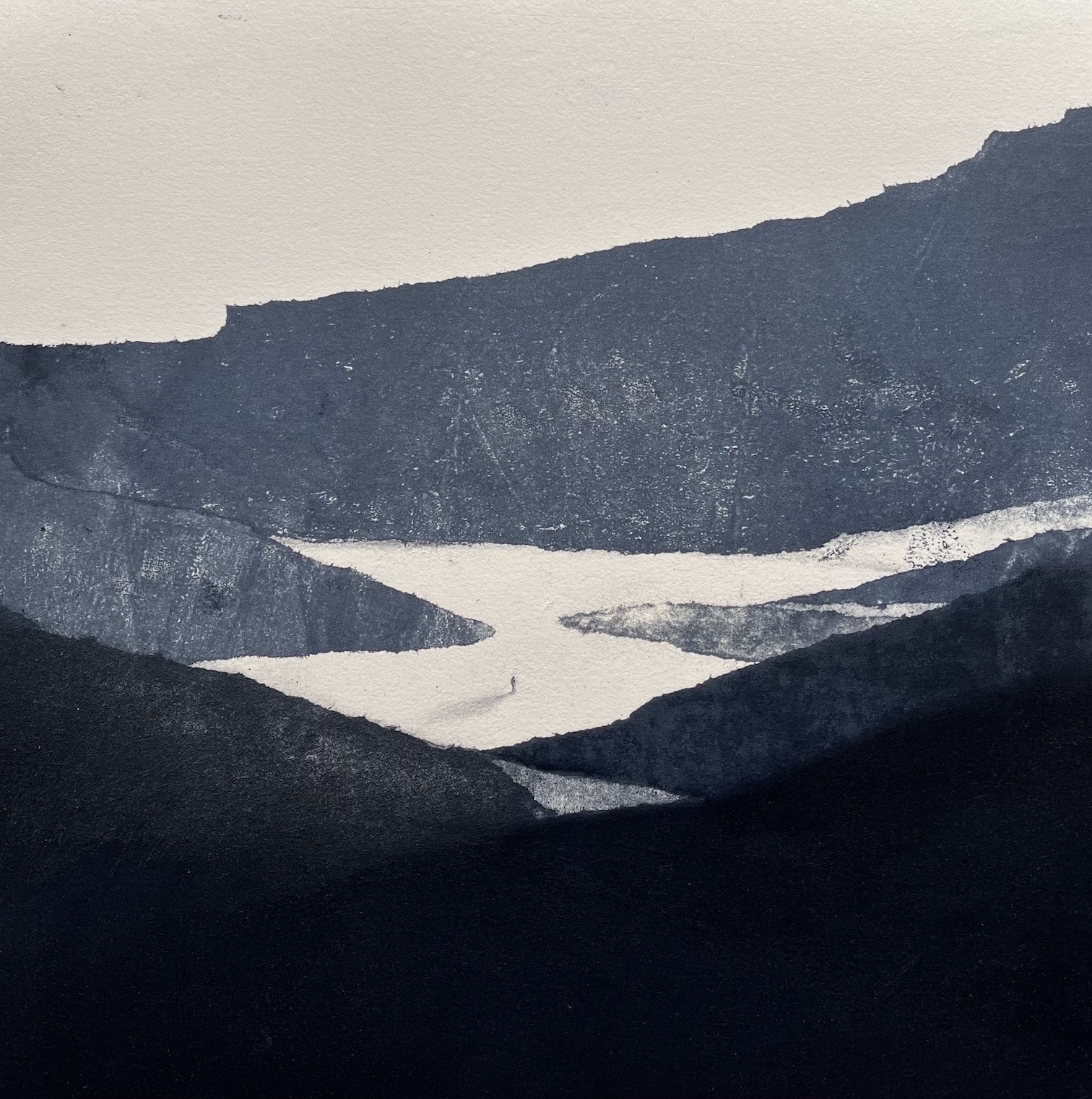Above:
Helen Brancatisano, Another Valley, 2023, monotype, akua ink, 54 x 54 cm, unique state
Below:
Helen Brancatisano, Rounding the Bend, 2023, monotype, akua ink, 50 x 50 cm, unique state
Helen Brancatisano, The Road Ahead, 2023, monotype, akua ink, 39 x 39 cm, unique state
Helen Brancatisano, Channel, 2020, monotype, oil on BFK Rives, 32 x 26 cm, unique state
Helen Brancatisano, Shallows, 2020, monotype, oil on BFK Rives,
32 x 17 cm
All images © and courtesy of the artist
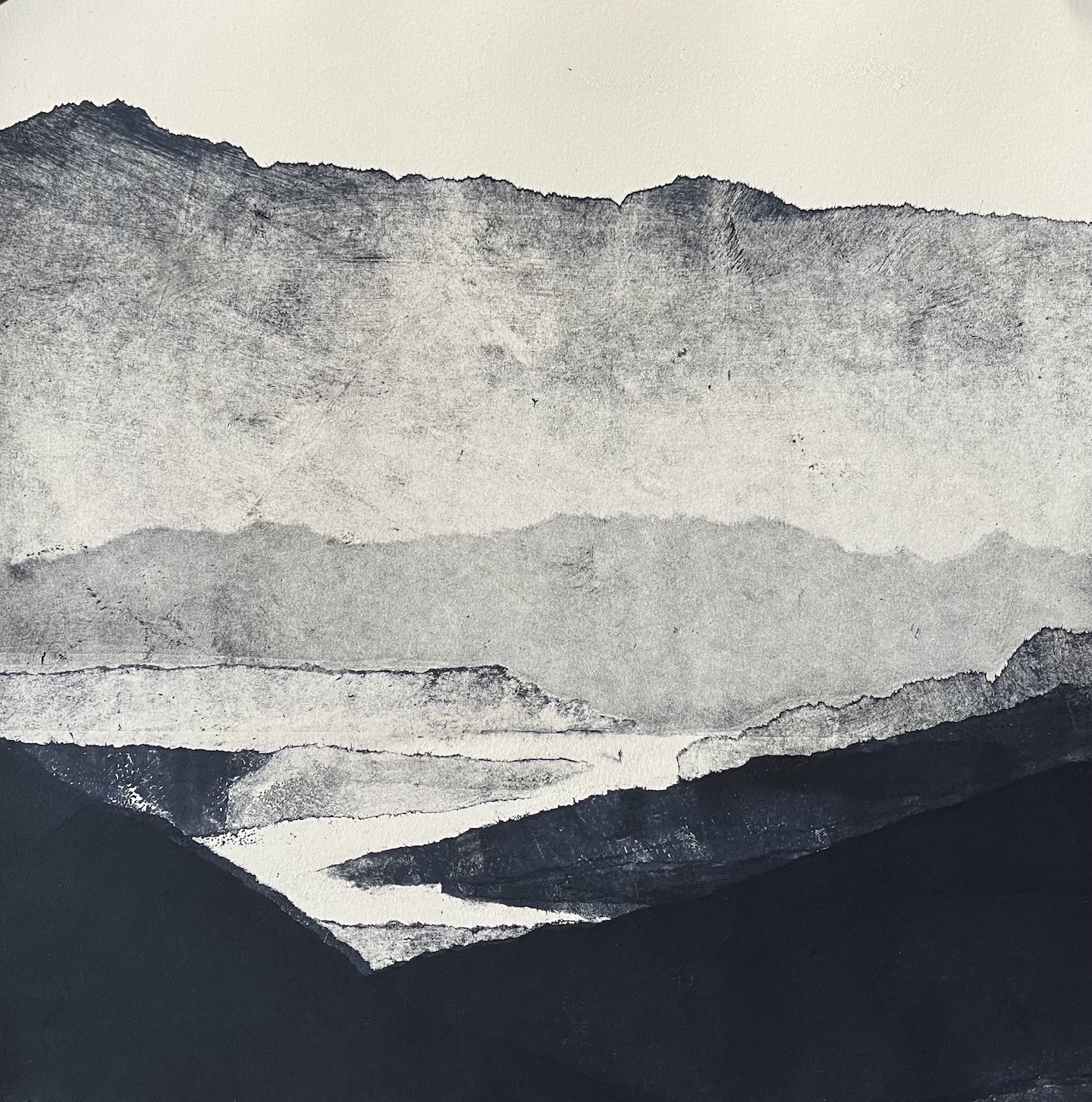
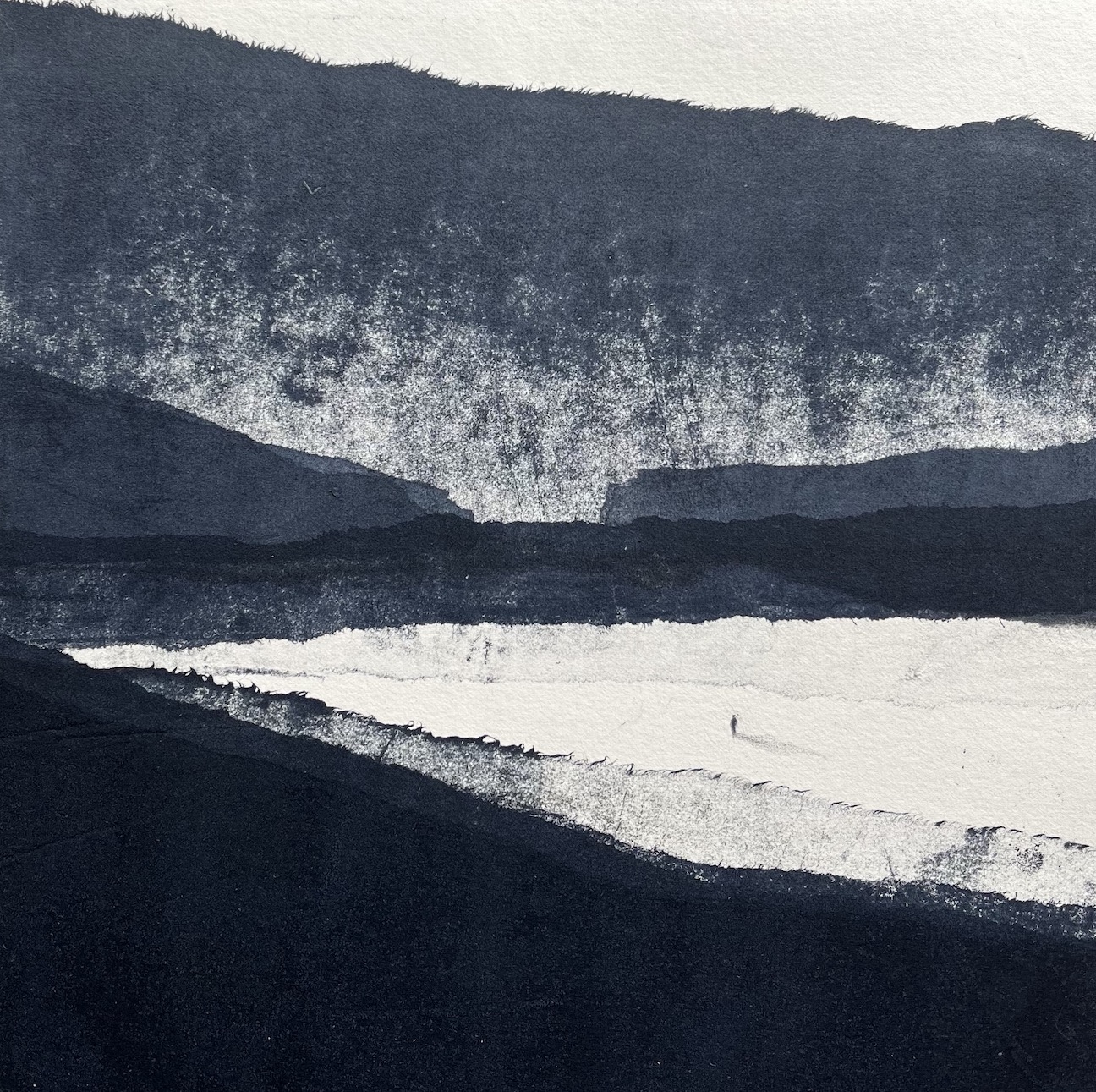
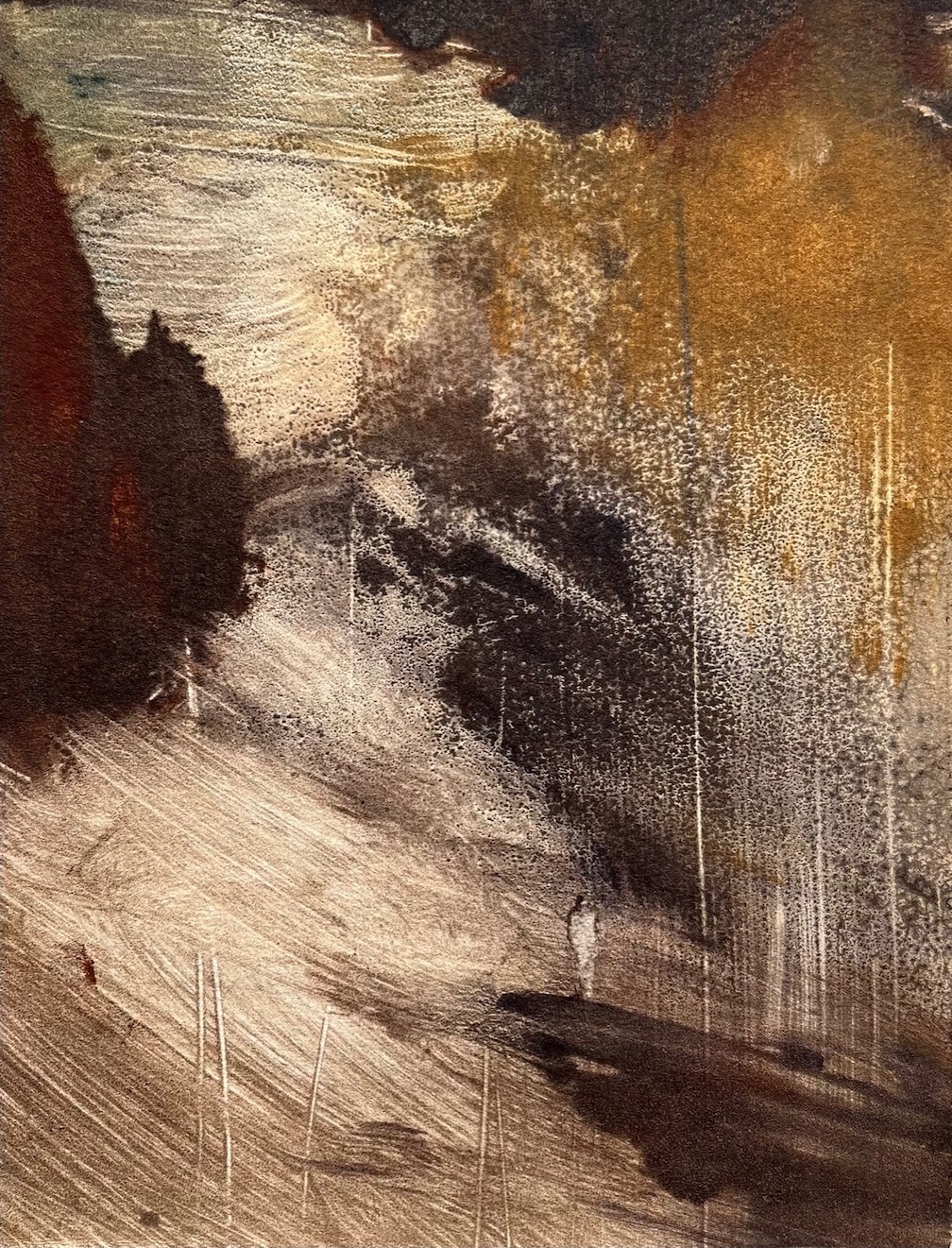
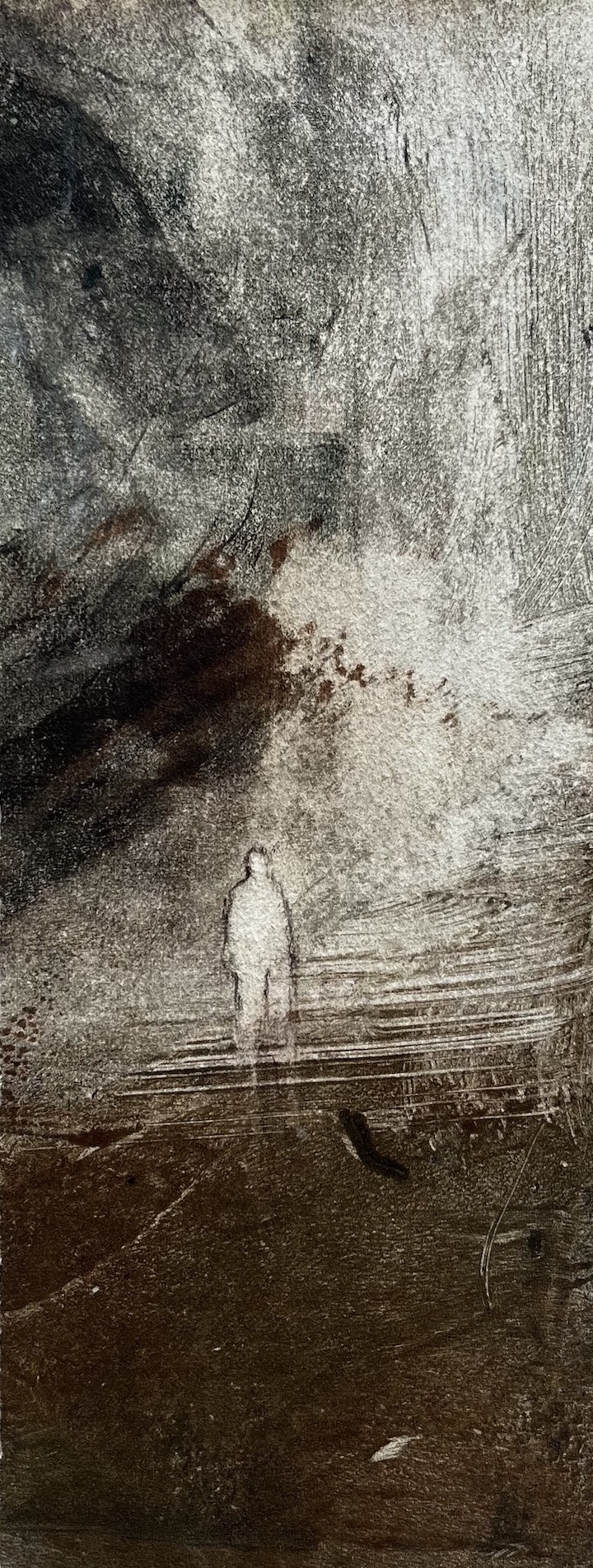
Q: What were some of the foundation ideas for this exhibition project?
A: What has interested me all my life is how people navigate their lives, each connected to their circumstances of place and time. The challenge of constant change is part of this navigation. The more I observe these circumstances, the more I recognise how bound we are to the physical world emotionally, psychologically, and philosophically.
Historical and literary texts, as well as the lives of those I observe in our contemporary setting, inspire my imagery.
One writer who had a significant impact on my understanding of our inextricable ties to the landscape is Robert Adamson whose poetry explores the landscape of the Hawkesbury River. His storytelling and vivid imagery mesh in a raw and often painful way. Some of the smaller monotypes in my exhibition stem from my first encounters with his works.
Historical texts provide more specific imagery of the impact of place and time on the individual. My research of the Biloela Industrial School for Girls established on Cockatoo Island in the 1870s, culminated in an exhibition in 2017 depicting the horrendous challenges the girls faced.
This current exhibition, Unfamiliar Territory, is a broader vision of the figure in the landscape, navigating challenges wrought by circumstance.
Q: How did the artwork selection take place?
A: I was quite unaware that I had the makings of an exhibition until I cleaned out my studio last year and revisited some smaller monotypes begun a few years ago, springing from reading the poetry of Robert Adamson. These were done in oil paint and mostly related to water. I had abandoned them as, at the time, they seemed not to have a context in which they could be shown. Revisiting them, I realised that my current body of monotypes would sit with them in an exhibition; they depict the human figure, diminutive in a large landscape, winding through mountains and valleys, part of the navigation of life.
I had also been building up a body of drawings in charcoal and akua inks, inspired by numerous visits to my local bushland; the dwarfed figure this time navigating an unwieldy landscape of rocks. Informed by my use of akua ink with monotypes over the past decade, the drawings began with the laying down of akua ink followed by charcoal drawing.
The selection process then came relatively quickly. It is surprising how you can be so embedded in your work that you don’t stop to notice where you have been and where you are headed.
Q: How does the exhibition manifest – what do visitors experience?
A: The Balmain Watch House is an historic and atmospheric old building which has several different rooms; some are old cells, as the cottage was once a police lockup in the mid 1800s. This gallery works well for exhibiting differing techniques related to the same theme. The viewer can then become immersed in each smaller ‘body’ of work in each space. It is an intimate experience.
The artist is responsible for staffing the gallery and this is a particularly rewarding aspect of the exhibition, both for the artist and the visitor. The artist is available to engage with visitors, answering questions and discussing the concepts behind the works.
My wish is that viewers can discover their own story in the works. The variety of techniques in the exhibition should enhance this possibility.
Q: What are some of the key works and what subject matter do they deal with?
A: Some of the key works are the monotypes I have been producing over the last year. They are executed in Payne’s Grey. It is a technique born from a wish to create layered landscapes into which I could place my diminutive figure. In these images the dwarfed figure wanders through vast imagined terrains of overwhelming circumstance.
I cannot really say how I hit on the technique as a way of expressing these landscapes, but I was inspired by collages I had seen and by the way they subvert the need for reality. Some experimenting and lots of time, led me to refine a new way of realising such images. The process is absorbing- a mix of planning, judging and being led by the work- and a degree of happenstance. I tear up old newsprint or other soft papers, and ink them up with a roller and Akua ink, placing them directly onto the paper (usually BFK). This is repeated with each strip of torn paper until the image builds up satisfactorily.
Q: What is it about the printmaking experience that you most appreciate?
A: In my earlier years of printmaking, I was drawn to the labour-intensive mezzotint and its rich, velvety tones. In contrast, the immediacy of drypoints also appealed to me. At some point, however, I recognised the monotype as the ultimate printmaking technique for me, uniting drawing, and painting. Reading about Degas’ reverence for the monotype as ‘a strange new beauty’ was another revelation to me. I had not appreciated the endless possibilities monotypes have to offer. In my printmaking practice I now produce monotypes exclusively, finding new techniques to best express my subject matter. The monotype certainly offers the promise of the unforeseen and this is often a springboard for another idea or approach. There is also a beauty in being able to produce the ‘ghost’ of a first pass through the press or an offset image as the basis for another image. I love that layering and history within the process.
—
Unfamiliar Territory (Helen Brancatisano) is at Balmain Watch House, 179 Darling St, Balmain, 23/24 March, 10am-4pm.
balmainassociation.org.au/exhibitions/
—
Join the PCA and become a member. You’ll get the fine-art quarterly print magazine Imprint, free promotion of your exhibitions, discounts on art materials and a range of other exclusive benefits.

